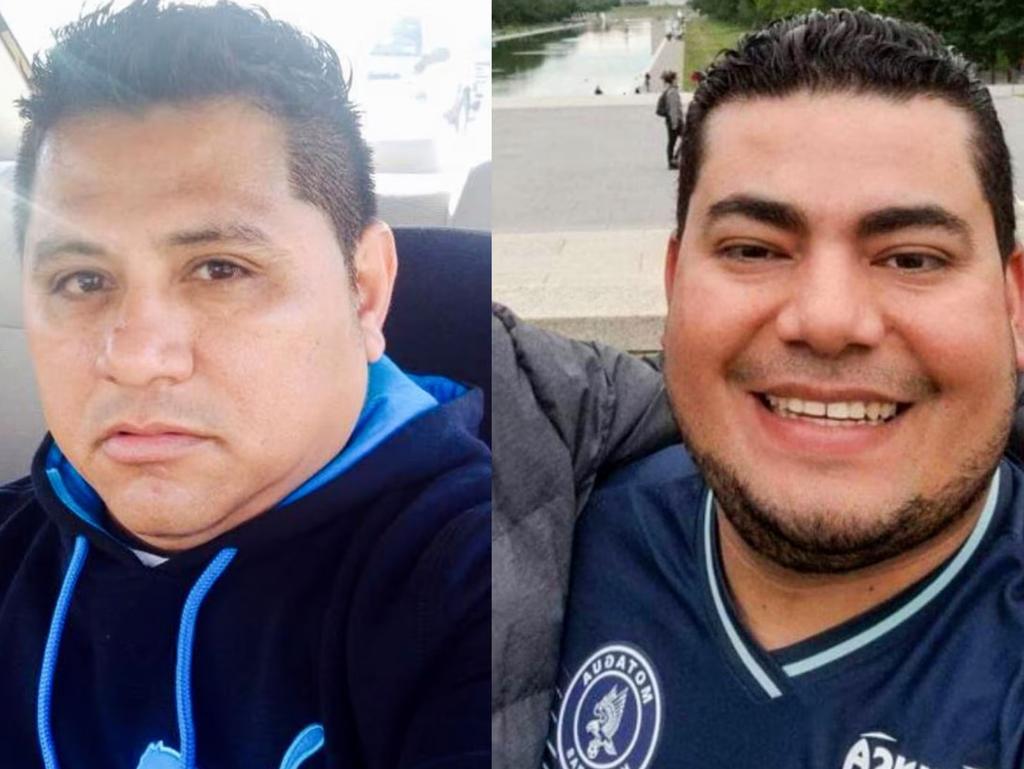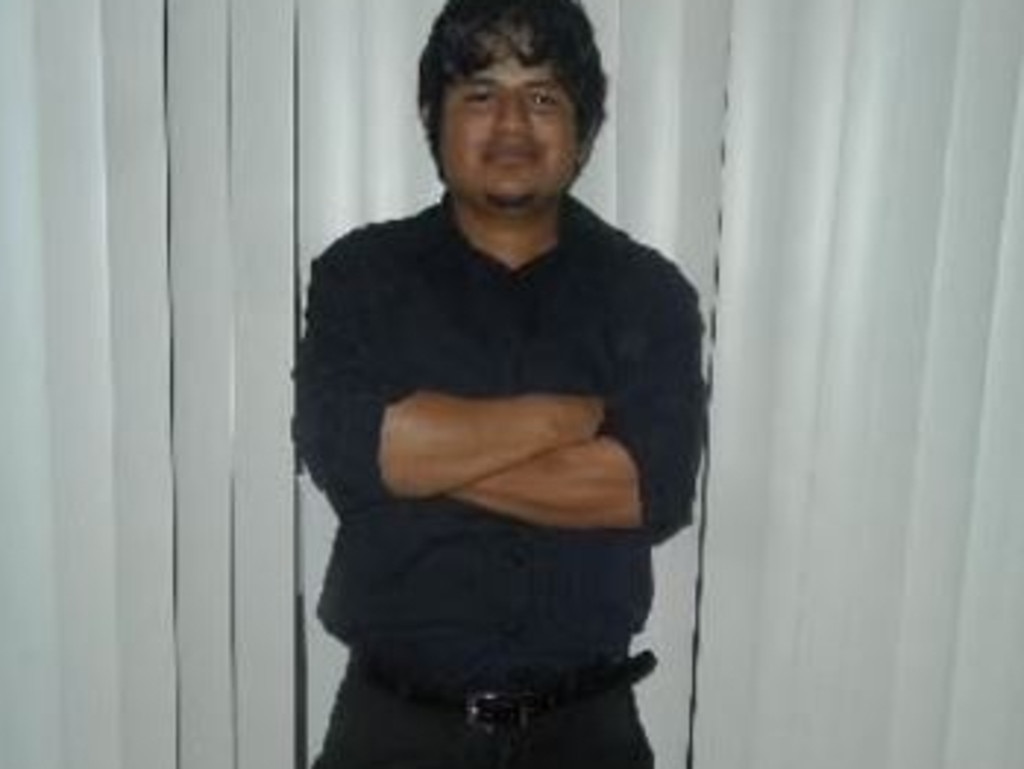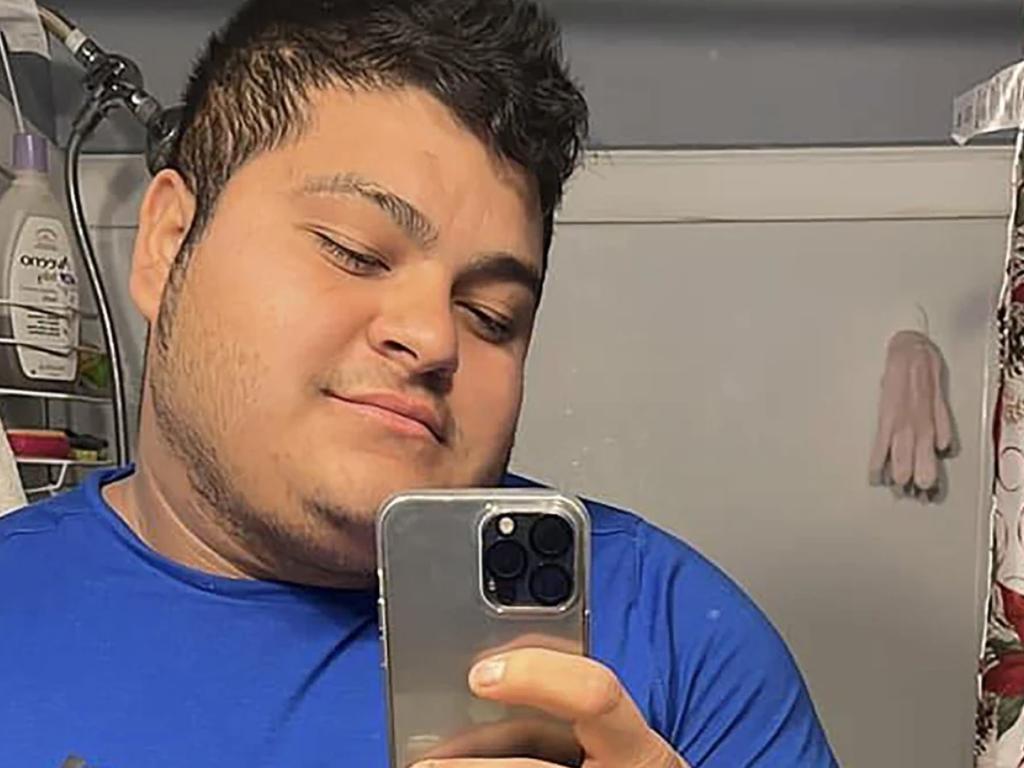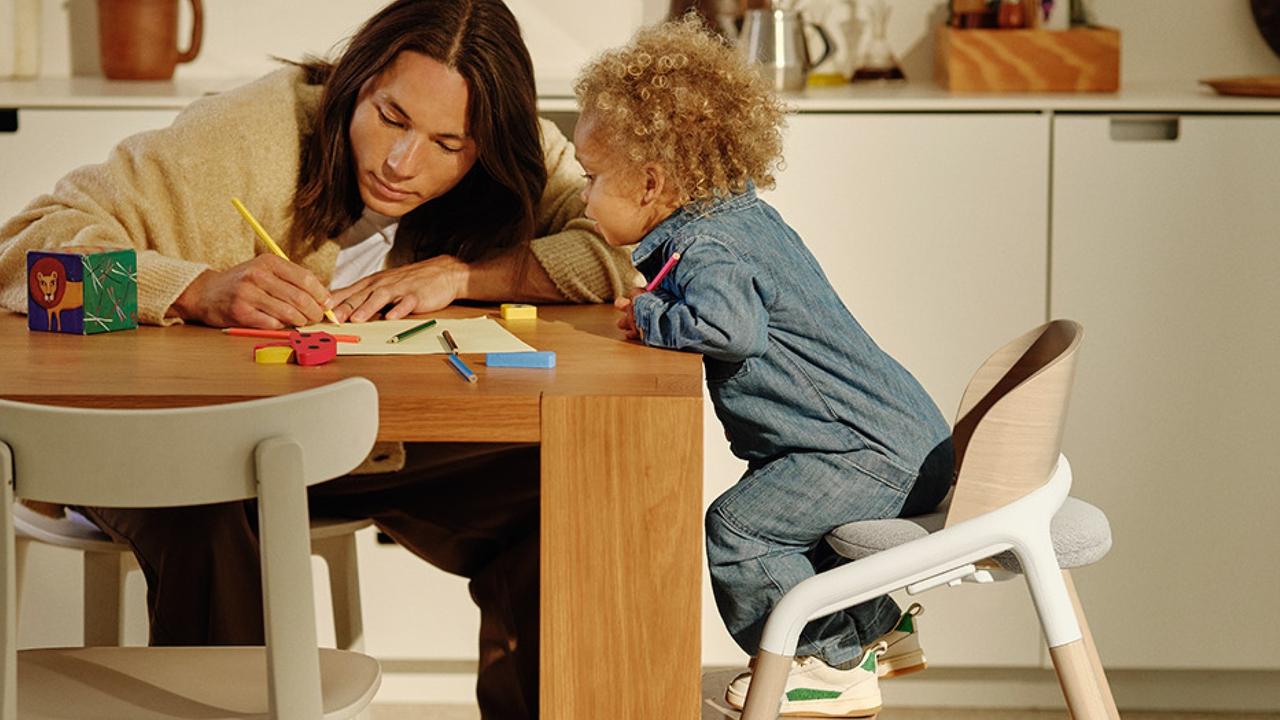Baltimore bridge collapse: Black box data reveals moment before doomed ship’s crash
Blaring alarms, an urgent call for tug boats, and a frantic decision to drop the anchor weren’t enough to stop the deadly Baltimore bridge collapse. Here’s what else the black-box audio revealed.

Companies
Don't miss out on the headlines from Companies. Followed categories will be added to My News.
Multiple alarms sounded on board the Dali cargo ship in the minutes before it crashed into Baltimore’s doomed Key Bridge, black box audio data revealed.
The National Transportation Safety Board (NTSB) said it received six hours of audio from the ship’s voyage data stretching from midnight until 6am. The ship crashed moments before 1.30am local time on Tuesday.
Marcel Muise, the NTSB lead investigator in the case, said that alarms began blaring on the ship at 1.24am.

At 1.26am, the ship’s pilot sent out a mayday for urgent help from nearby tug boats, and at 1.27am he ordered the ship’s anchor be dropped.
The exact cause of the crash that has left at least six people dead is still under investigation, with some form of mechanical failure speculated as footage also showed the ship’s lights turning on and off several times in the moments before.
NTSB Chief Jennifer Homendy confirmed all 23 crew members – including two temporary pilots intended to only safely steer the vessel out of port – were safe.
More than 4600 cargo units were on board the ship, 56 of which contained hazardous materials.
Chief Homendy said some of the hazardous cargo was breached, but did not indicate it posed a public safety threat.
After Mr Muise offered details of alarms sounding off in the moments before impact, Chief Homendy said the data falls short of what investigators would expect if they were investigating a similar catastrophe involving an aircraft.
She said the NTSB has sought more detailed data from ships’ voyage data recorders for a long time, and said they are instead fitted with apparatuses that can only record basic data.
Although the Dali ship featured a newer model than others, the NTSB chair said that it is still “very basic”.
This means that while the Dali data incudes the ship’s location and rudder commands alongside audio, it does not record important details such as power distribution data.

Chief Homendy concluded that the cargo ship has been left in a state of “utter devastation” and has “structural damage everywhere”, as it continues to be anchored in place on the Patapsco River.
A ship carrying a giant crane has now arrived to the scene of the catastrophic bridge collapse over Baltimore harbour, as authorities warned of extensive work before the port can reopen.
The machinery will be deployed in a tricky operation to clear the twisted steel remnants of the Francis Scott Key Bridge from where it fell 185 feet (56 metres) into the Patapsco River - blocking the entrance to the Port of Baltimore.
“We are moving heaven and earth” to get the commercial hub up and running again, senior White House official Tom Perez told MSNBC.
BRIDGE VICTIMS IN US FOR A BETTER LIFE
The bridge collapse victims all hailed from Latin America and had come to the US to seek opportunities while supporting their families back home.
Miguel Luna, 49, a father of three, who remains missing presumed dead had been a resident of Maryland for more than 19 years, according to local non-profit CASA.
His wife, Maria del Carmen Castellon told local news station Telemundo 44 she was devastated.
“They only tell us that we have to wait, that for now, they can’t give us information. [We feel] devastated, devastated because our heart is broken, because we don’t know if they’ve rescued them yet. We’re just waiting to hear any news,” she said.

A second man, Maynor Suazo, 37, originally from Honduras was identified in his homeland as another worker who is missing and presumed to be dead.
Mr Suazo, a father of two, had been living in the US for the past 18 years.
Jesus Campos, a co-worker, said many of the workers sent money to family in their countries.
“I could have been there like my co-workers,” he said.
“We’re low-income families … Our relatives are waiting for our help back in our home countries.”

It comes as the family of Alejandro Hernandez Fuentes released a photo of the 36-year-old who died in the disaster.
His body, alongside that of Dorlian Ronial Castillo Cabrera, 26, was found by divers on Wednesday, inside of a red truck that had sunk eight metres into the frigid Patapsco River.
The workers were part of an eight-person road repair crew working an overnight shift. Two were rescued shortly after the collapse.
Area residents attended a vigil at a nearby park Thursday morning local time, local media reported, while the Baltimore mayor’s Office of Immigrant Affairs established a relief fund to raise money for the victims’ families.
“Our hearts are with the families,” Maryland Governor Wes Moore told reporters, adding, “We are so sorry for this tragedy.”
BRIDGE COLLAPSE COULD TOTAL $6BN IN INSURANCE PAY OUT
Maryland Governor Wes Moore announced the Maryland Department of Transportation had asked the Biden administration for an initial $US60 million for “immediate response efforts, and to lay the foundation for a rapid recovery.”
President Joe Biden earlier in the week pledged the federal government would cover the entire cost of rebuilding the bridge.
The collapse of Baltimore’s Francis Scott Key Bridge - crossed by tens of thousands of motorists each day - is likely to lead to a multi-billion dollar insurance loss, the chairman of Lloyd’s of London said on Thursday local time.
The massive Singapore-flagged container ship Dali sailing out of Baltimore Harbor bound for Sri Lanka reported losing power and the ability to manoeuvre before ploughing into a support pylon of the bridge on Tuesday.
The impact brought most of the bridge tumbling into the mouth of the Patapsco River, blocking shipping lanes and forcing the indefinite closure of the Port of Baltimore, one of the busiest on the US Eastern Seaboard.

The tragedy could lead to up to $6 billion in insurance claims, Morningstar DBRS said.
It was too soon to put a figure on the total insurance loss, Bruce Carnegie-Brown told Reuters, but he said he would be “very surprised” if the event did not result in a multi-billion dollar loss, adding that “the tragedy has the capacity to become the largest single marine insurance loss ever”.
Lloyd’s, which has more than 50 member firms, is active in the marine and property insurance markets, which are expected to face large claims from the damage to the bridge and the disruption in the port.
Authorities are turning their focus to “salvage” operations to remove wreckage from the Patapsco River after a massive container ship caused Baltimore’s Key Bridge to collapse.
“We have exhausted all search efforts in the areas around this wreckage,” said Col. Roland L. Butler Jr., superintendent of the Maryland State Police.
Coast Guard Rear Adm. Shannon Gilreath said reopening the waterway into Baltimore’s port is the “number one priority”.
COMPANY BLASTED FOR ‘SHAMEFUL’ MISTREATMENT OF CREW
Ships owned by the company responsible for the cargo vessel that destroyed a US bridge had previously been blasted by Australian authorities for “serious and shameful” mistreatment of crew members.
The violations were deemed so serious by the Australian Maritime Safety Authority that the Western Callao – owned by Singapore-based company Grace Ocean Private – was banned from Australian ports for six months in 2021.
The Dali, another Grace Ocean vessel, slammed into Baltimore’s Francis Scott Key Bridge in the early hours of Tuesday (local time) after it lost power while navigating out of the city’s port to begin a 27-day journey to Sri Lanka.

On Wednesday, specialist divers crews continued to search for the bodies of six workers who were repairing potholes on the bridge when it collapsed into the Patapsco River.
The bodies of two workers were recovered on Wednesday morning (local time) from a ute that was almost eight metres underwater.
Maryland State Police Superintendent Roland Butler named them as Alejandro Hernandez Fuentes, 35 and Dorlian Ronial Castillo Cabrera, 26.

But he said divers could no longer safely operate in the disaster zone, as the other vehicles that fell from the bridge were trapped under concrete debris, and that authorities would now move to a “salvage recovery effort”.
A safety probe into the bridge collapse will include whether contaminated fuel played a role in the giant cargo ship losing power and crashing, The Wall Street Journal reported.
The Dali remains stuck at the pillar of the collapsed bridge and could remain there for weeks, the WSJ said.
Shipping experts told The Washington Post that “dirty fuel” could have contributed to the tragedy.


The Post referred to a 2018 report for the Atlantic Council think tank, which said a “witches brew” of industrial products in marine fuel had resulted in hundreds of engine failures in recent years that had left ships powerless.
Common marine fuel contaminants include water, dirt and algae, one expert said.
Supt Butler confirmed that the six victims – a group of construction workers who were repairing potholes – were from Mexico, Guatemala, El Salvador and Honduras.
Two of the missing workers have been named by family members as Miguel Luna, 49, a father of six and Maynor Suazo, 37, a father of two.
As authorities obtained the ship’s “black box” to begin mapping out what went wrong, the connection to action taken in Australia against another Grace Ocean vessel also emerged.

During an inspection of the Western Callao in South Australia in September 2021, authorities found 13 crew members were collectively owed about $40,000 and had been on board for more than a year, despite promises to replace them after nine months.
The year beforehand, the same ship had been inspected in New South Wales, and eight crew members had been on board for more than 11 months.


AMSA also found 10 crew members on board the Furness Southern Cross – another Grace Ocean-owned ship – for more than 14 months, according to the authority’s executive operations director Michael Drake.
In a statement at the time, he blasted the “serious and shameful” breaches of the Maritime Labour Convention.
“Australia has zero tolerance for the underpayment of crew,” he said.

“This type of behaviour is unethical and in complete contravention to the Maritime Labour Convention. The international conventions that protect seafarers’ rights are very clear.”
The ships cited in Australia were managed by Bright Star Ship management, while the Dali was handled by a different company, Synergy Marine Group.

Its 22 crew members from India escaped injury during the catastrophic accident.
“We extend our deepest sympathies to everyone affected and their families,” Synergy said in a statement.
“Our thoughts are with them as we co-ordinate closely with the authorities to manage the incident’s aftermath.”
The Dali had previously collided with a port in Belgium. It had otherwise passed a series of safety checks, although in June last year, inspectors in Chile identified a “propulsion and auxiliary machinery” deficiency. It was resolved within a day and the ship kept travelling.
More Coverage
Originally published as Baltimore bridge collapse: Black box data reveals moment before doomed ship’s crash








